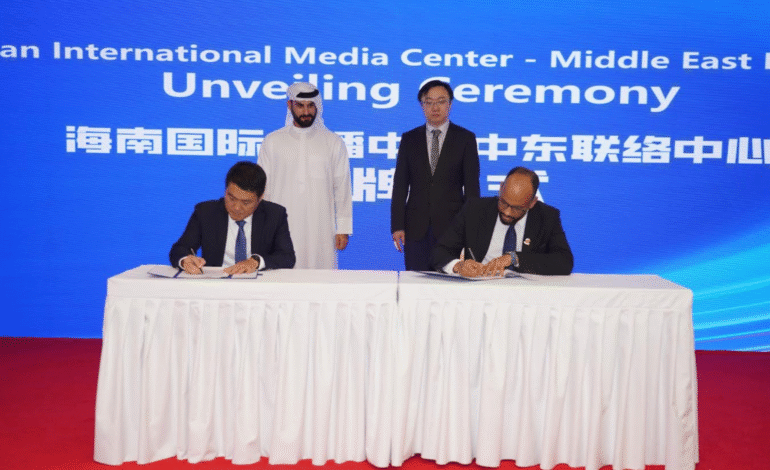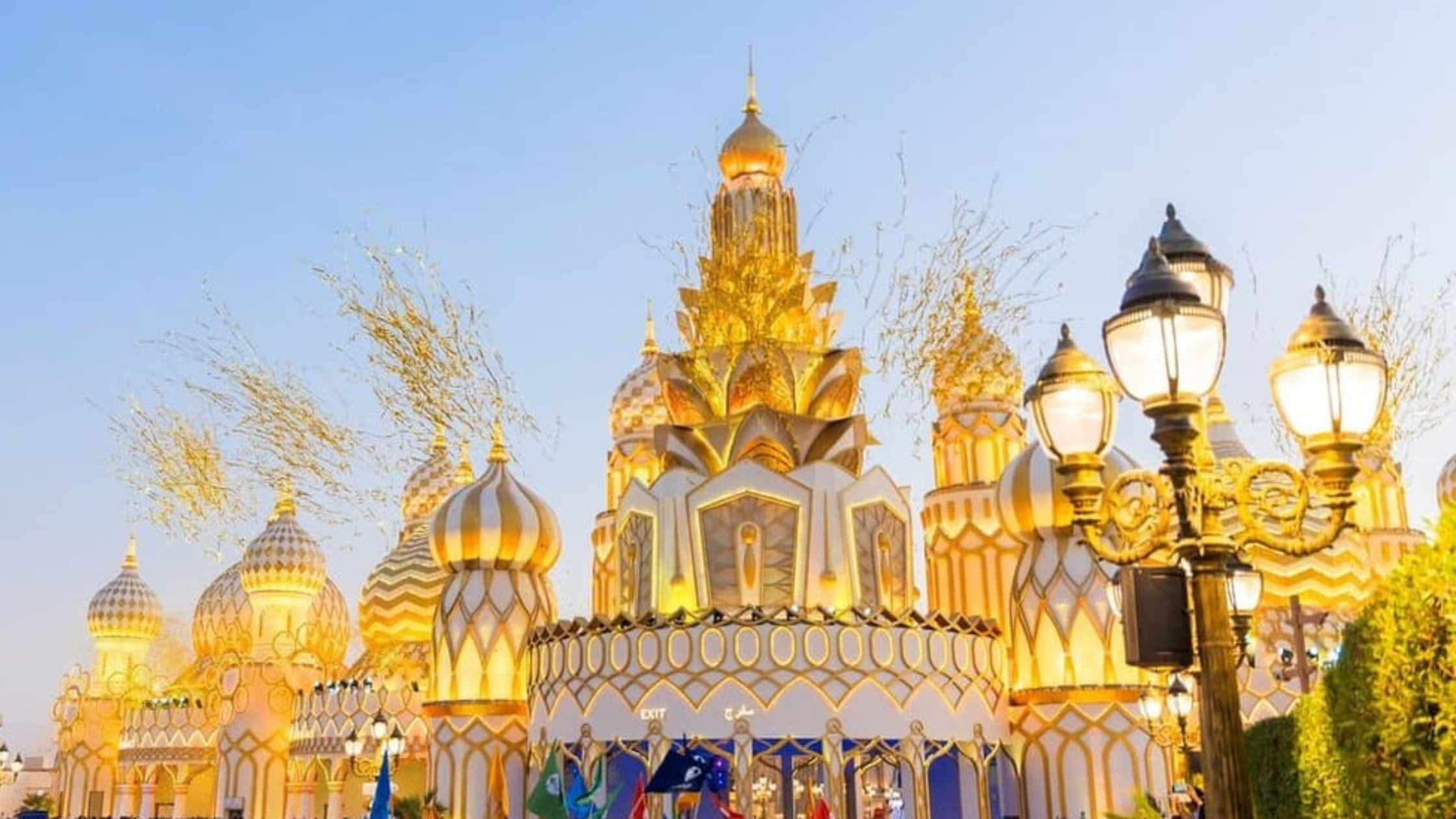China-UAE Media Partnership Expands With New Dubai Hub

The evolving relationship between China and the United Arab Emirates continues to gain momentum, as evidenced by a recent milestone held within the China Pavilion at Expo Dubai. A new chapter of bilateral cooperation was written during the inauguration of the Middle East Communication Centre of the Hainan Media Group, strategically headquartered in Dubai. The event coincided with the China-Arab Media Salon and spotlighted the increasing role media plays in fortifying the strategic partnership between China and Arab nations, especially the UAE.
The newly launched media hub underscores the strong economic, social, and trade ties that bind China and the UAE, and represents a critical conduit for advancing cultural understanding. Hainan Media Group’s decision to establish its regional operations in Dubai reflects the Emirate’s stature as a media, business, and tourism hub within the Middle East.
Hainan’s Role in Strengthening Strategic Dialogue
During the salon, Xian Yi, Deputy Consul General of the People’s Republic of China in Dubai, emphasized how the Belt and Road Initiative (BRI) has become a guiding framework for deepening Sino-UAE collaboration. Hainan, a province central to China’s BRI ambitions and the site of the country’s Free Trade Port pilot zone, plays a crucial role in expanding international cooperation.
According to Xian Yi, the Middle East Communication Centre is a milestone in promoting diplomatic relations, providing a bridge for increased cultural, media, and public engagement between China and the UAE. The centre aims to become a reliable platform for people-to-people connectivity, offering a space for nuanced storytelling and media diplomacy in the region.
Economic Ties Reflected in Tourism and Aviation
Shahab Shayan, Regional Director for Asia Pacific at Dubai’s Department of Economy and Tourism, reiterated the importance of China as a core market for Dubai. The establishment of direct air routes between Dubai and Hainan has accelerated growth in tourism and trade, fostering an ecosystem of shared prosperity. Shayan forecasted that the new media centre would facilitate content collaboration, enhance cultural exchange, and support economic ties under the broader BRI framework.
In 2023 and 2024, trade and tourism flows between China and the UAE have surged. With direct flights now operating between Haikou and the UAE’s two key cities—Dubai and Abu Dhabi—a new “aerial Silk Road” has been established. These connections not only promote tourism but also act as a logistical backbone for broader economic exchange.
A Media Vision Aligned with Global Dialogue
Wang Lie, Deputy Director of Hainan Broadcast Station, elaborated on the broader vision of openness championed by Hainan and China at large. He emphasized that the Hainan Media Group is dedicated to cultivating deeper intercultural understanding and seeks to act as a bridge between Chinese and Arab audiences. As global dynamics shift toward greater cross-cultural interaction, the media group plans to invest significantly in the Dubai-based centre.
Lie noted that this cooperation model aims to break barriers, allowing shared narratives around development, culture, and technology to gain global traction. The collaboration is seen not merely as a regional initiative but as a model for international media connectivity.
Strategic Content Partnership to Support BRI Themes
A pivotal part of the event was the signing of a partnership agreement between Hainan Media Group and China Arab TV. This agreement focuses on program exchange and joint content production to highlight Hainan’s advancements in trade, openness, and institutional reforms. The content produced will cater to a pan-Arab audience spread across 22 countries, enhancing awareness of Hainan’s Free Trade Port and its growing relevance to the Arab world.
This initiative supports the BRI’s core principles of shared prosperity and infrastructure-driven growth, demonstrating how media can articulate the values of international cooperation in easily consumable formats for global audiences.
Thought Leaders Emphasize Shared Vision
The event featured a panel dialogue with respected media and academic figures from both China and the Arab world. Wang Lie, Mohamed Beiji of China Arab TV, Prof. Amer Fakhoury from the American University in the Emirates, and Prof. Mohamad AlNaeb from the Strategia Centre for Studies participated in the session.
Discussions focused on how media cooperation could be improved through shared developmental experiences. Prof. Fakhoury highlighted the UAE’s dual identity as both a commercial hub and a BRI strategic partner. He emphasized the importance of telling the evolving story of China-UAE relations through high-quality and culturally sensitive media productions.
Prof. AlNaeb emphasized that the BRI—launched by Chinese President Xi Jinping—provides a long-term blueprint for sustainable development, particularly in high-growth zones like Hainan and Dubai. He advocated for practical cooperation in green energy, digital innovation, and tourism, facilitated by strong media partnerships.
Hainan and UAE Boost Institutional Connectivity
Since 2023, there has been an observable increase in bilateral exchanges between Hainan and various UAE entities. These include industrial partnerships across renewable energy, digital health, logistics, and advanced technologies. Bilateral trade in goods between Hainan and Arab countries has grown at an average annual rate exceeding 30%. In 2024 alone, trade volumes are projected to surpass 24 billion yuan, reinforcing the momentum for enhanced economic cooperation.
One of the standout areas of success has been the agricultural and environmental sectors. UAE’s donation of 25,000 date palm seedlings to Hainan, now thriving in Wenchang, highlights sustainable agricultural diplomacy. In return, Hainan-grown produce such as Danzhou eggplants and Sanya okra have entered the Middle Eastern market, signaling deeper integration of supply chains and food security frameworks.
Infrastructure and Maritime Trade Collaborations
A notable infrastructure development includes the agreement between Yangpu Port in Hainan and Abu Dhabi Port. This partnership is expected to enable smoother cargo movement and bolster maritime finance initiatives. It also sets the stage for next-generation logistics operations using advanced digital technologies and blockchain-enabled platforms.
These developments indicate a transition from mere “hard connectivity”—focusing on roads, ports, and shipping—to “soft connectivity” involving institutional alignment, media collaboration, and cultural dialogue. Such connectivity is pivotal for realising the larger goal of an integrated economic zone that supports innovation, sustainability, and inclusive development.
Dubai as a Global Media and Innovation Hub
Dubai’s selection as the base for the Hainan Media Group’s regional centre is a strategic move aligned with its identity as a cosmopolitan city where East meets West. As a gateway to Africa, South Asia, and Europe, Dubai provides the perfect launchpad for content that can influence opinion across a broad spectrum of cultures and markets.
Additionally, the Emirate’s media ecosystem—home to dozens of international broadcasters, tech companies, and production houses—offers the infrastructure and expertise required for cutting-edge content development. This enhances the capability of Hainan Media Group and China Arab TV to reach wider audiences effectively.
Paving the Way for Deeper Engagement
The establishment of the Middle East Communication Centre in Dubai marks a significant stride in media-driven diplomacy between China and the Arab world. The strategic positioning of the centre, the robust program partnerships, and the multi-sector cooperation framework all align with the broader goals of the Belt and Road Initiative.
China-UAE relations are increasingly being defined by shared visions in trade, tourism, culture, and sustainable development. Through the lens of media, these partnerships are now more accessible and better understood. As both countries continue to explore common ground, platforms like this newly established media hub will serve not only to inform but also to inspire cooperation across the region and beyond.
The evolving narrative between China and the UAE illustrates how strategic communication, cultural openness, and institutional collaboration can redefine diplomacy in the 21st century. With solid infrastructure, mutual respect, and media capability, the two nations are well-positioned to lead an inclusive and cooperative future in the global landscape.








1 Comment
[…] Oman are working to reshape their economic models. Programs such as Saudi Arabia’s Vision 2030, UAE Centennial 2071, and Oman Vision 2040 prioritize tourism as a sustainable growth engine that […]
Comments are closed.